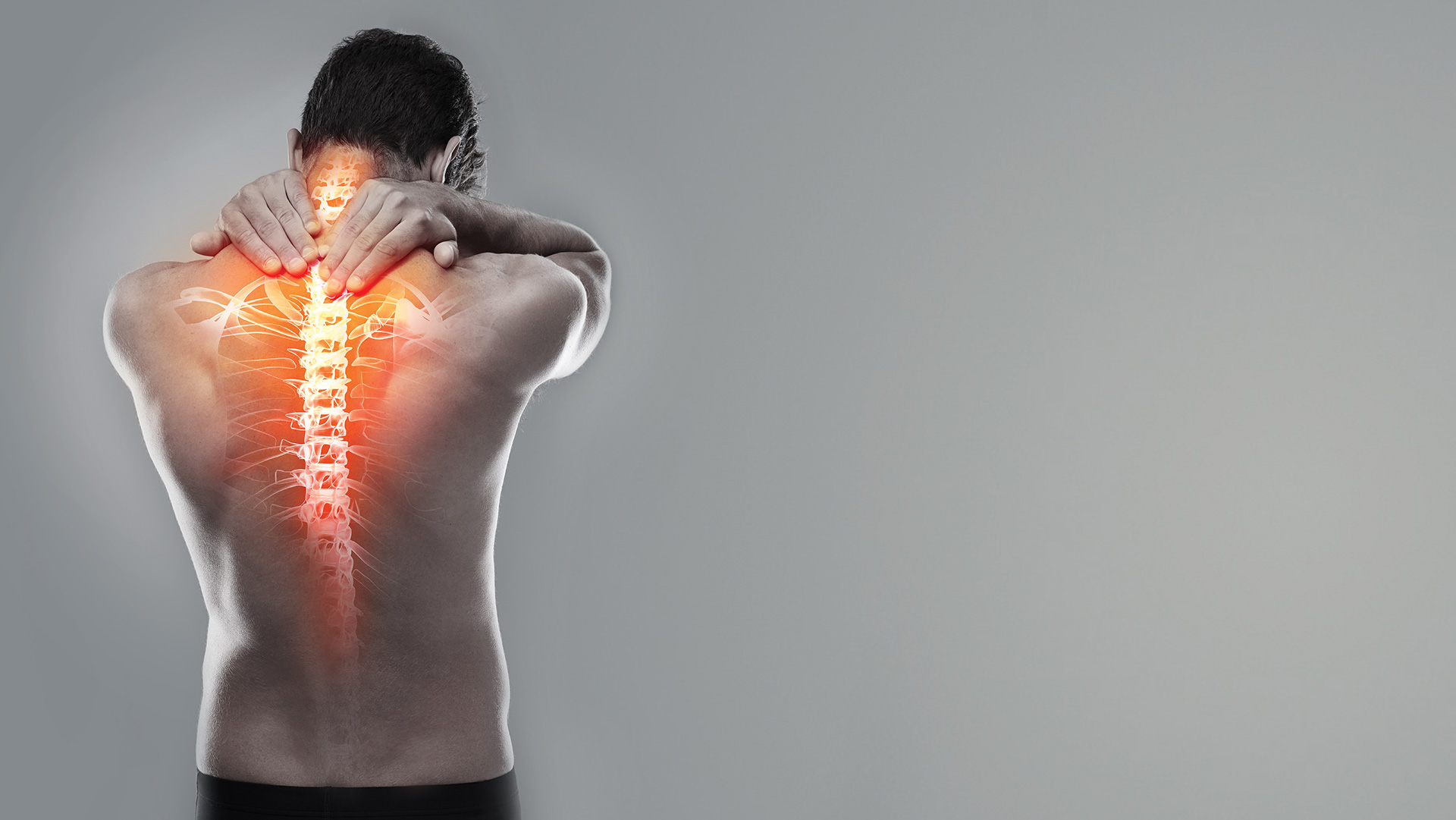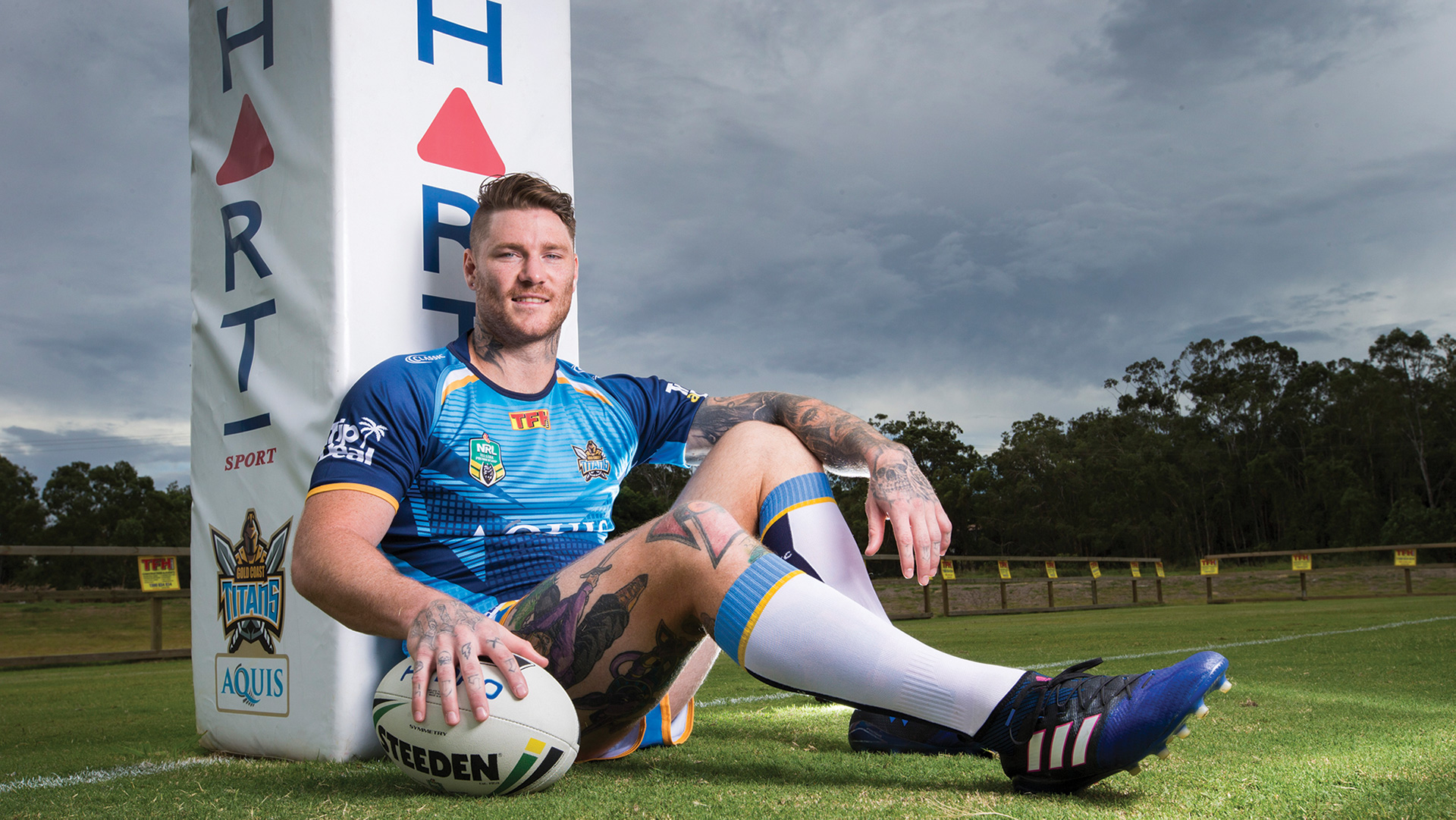
On a sunny morning in July 2017, Gold Coast Titans second-rower Chris McQueen nervously lay waiting on a hospital gurney. He watched as the anaesthetist wiped his arm with an alcohol swab and winced as the needle of the intravenous cannula pierced his skin and slid up his vein.
McQueen was about to undergo a cervical spine total disc replacement and anterior cervical fusion to help repair damage sustained through eight years and 154 first-class games of brutal tackling in the NRL. He had felt comfortable with his decision to proceed with the surgery but, as he lay bathed in the slab of fluorescent lights, a wave of what-ifs hit him. What if something went wrong? What if he was paralysed? What if he could never play another game of rugby again?

Just then his spinal surgeon, Dr Laurence McEntee, entered the anaesthetic bay wearing blue scrubs and a clean-shaven smile.
“We’re ready to go,” McEntee told McQueen, shaking his hand. “Any questions?”
“Will I be any taller after you replace my disc?” McQueen asked.
McEntee laughed. “Maybe by a millimetre or two.”
After McQueen was wheeled into the theatre, McEntee reviewed the diagnostic images one last time—he could see the bulging discs and bony spurs that were causing pain and numbness down both his arms and keeping him from his beloved game.
Once McQueen was asleep McEntee secured his head to the operating table with long strips of duct tape. Then he put on a mask, scrubbed his hands, gowned and gloved and, taking a scalpel, made his first incision, being careful to avoid the Harry Potter Deathly Hallows tattoo splayed out on the burly man’s neck.
Although McQueen, at 29, was relatively young to be having this kind of surgery, he was far from unique. In fact, McEntee himself had had a similar operation at only 28.
“People don’t realise that spinal deterioration begins from their late teenage years onwards,” McEntee told me. “Generally, it’s a non-painful process with everyone’s spine wearing out at different rates.”
According to the Australian Institute of Health and Welfare, chronic back pain affects 3.7 million people and is the third leading cause of disease burden in Australia. In 2009 the direct healthcare expenditure on back pain alone was $1.2 billion.
McEntee says it’s a massive problem. “It’s probably the number one leading cause of musculoskeletal disability, certainly in working-age people.”
The causes of back pain are myriad, including muscle and ligament strain, inflammation, osteoarthritis, scoliosis and compression fractures secondary to osteoporosis. However, McQueen was suffering from another common cause: radiculopathy, also known as nerve compression.
This condition arises from the spine’s complex anatomy. The spinal column consists of 24 vertebrae, along with the sacrum and coccyx. There are two main parts of a vertebrae: the body; and the vertebral arch, which forms a bony tunnel that protects the spinal cord.
The vertebrae are joined to each other by intervertebral discs, which are composed of an outer fibrous ring and an inner gel-like centre. As we age the discs become more fibrous and less elastic, leading to disc shrinkage and bulging which can press on nerves. With trauma the fibrous ring can rupture, leading to extrusion of the gel-like centre and further nerve impingement.
With ageing and degeneration, bony spurs can grow out from the edges of vertebral bodies also causing nerve compression.
Management includes activity modification such as avoiding heavy lifting or prolonged sitting. Paracetamol and non-steroidal anti-inflammatory drugs can be used to help with pain.
Most episodes of radiculopathy are self-limiting. However, if severe symptoms persist, surgery may be required to help relieve pressure on the nerves. This could involve removing part of a damaged disc, removing an entire damaged disc or joining vertebrae together to prevent movement and nerve impingement (spinal fusion).
“With the proper approach to the diagnosis and treatment of people, and then the right operation on the right person for the right reason, the results can be spectacular and really change people’s lives,” says McEntee.
There is limited evidence that surgery for chronic, non-specific, lower back pain is beneficial.
However if surgery is warranted, it’s often no easy task to have it. Waiting times for public orthopaedic outpatient clinics are often substantial, with equally long waits once patients are seen before they can actually have surgery.
As a result, many, who can afford to, have turned to the private health care system to have their spinal surgery done. According to Private Healthcare Australia, more than 13,000 spinal surgeries were covered privately in the 2016–2017 financial year, costing health funds more than $380 million.
But even with private health cover, there can be nasty surprises. Spine Society of Australia president Dr Michael Johnson is concerned many private patients will only discover they are inadequately insured when they reach the stage where surgery is required.
“An example of this is nerve compression in the neck, known as cervical radiculopathy, which leads to pain and upper limb weakness,” he said. “Under new clinical categories, patients with Silver cover will only be covered for a posterior cervical decompression to treat this problem. In most cases, this is an inferior option as the dissection of the paraspinal muscles leads to increased pain, higher infection rates and longer hospital stays.”
But Private Healthcare Australia CEO Dr Rachel David defends the tiered coverage model, saying private health needs to be sustainable. “This ultimately benefits all Australians by keeping pressure off the public hospital system,” she said.
Thankfully, up to 90 per cent of patients who see an orthopaedic surgeon won’t require surgery, says McEntee. “The vast majority of people can generally manage with regular exercise, maintaining good weight and posture, core muscle and back muscle strengthening exercises, and from physiotherapy.”
Indra Richmond-Suherman is a Darwin-based physiotherapist who recommends applying localised heat for an acute disc bulge, taking anti-inflammatories and walking for at least 30 minutes a day.
He gives patients targeted exercises and stretches designed to reduce irritation of the sciatic nerve and improve back movement. “Education is important regarding minimising aggravating movements,” he said. “This includes stopping bending movements, minimising bending-type stretches and getting out of their chair every 30 minutes.”
Surfers Health Medical Centre chiropractor Kate Hayter recommends staying positive. “There’s a big mental barrier when it comes to injured backs. But if you stay positive that can really help.” She says it’s important to persevere with rehabilitation. “People stop too early when they’re out of pain, but they don’t realise that they’re still vulnerable to re-injury.”

Two hours after McQueen was anaesthetised, he woke to find his surgery was complete. The first thing he did, when it came time to change his bandages, was check to make sure his neck tattoos were intact.
Within a week he was moving his neck and getting back to his normal day-to-day life. Beginning with gentle exercises and rehabilitation weights, he began to slowly build up his strength. In January 2018, after having signed a three-year contract with the Wests Tigers, he was given the green light to begin full training again.
“I was still under-done in terms of my conditioning and just being back to NRL standard of footy, so I started the season in reserve grade,” McQueen said. In round 11 he was called to the senior team for their clash against the Penrith Panthers, and subsequently played two more first-class games for the Tigers during the 2018 season.
He is pleased to report that he has full range of movement in his neck and no longer suffers from any radiculopathy. For anyone struggling with nerve compression, McQueen recommends surgery. “If you’re going ahead with the surgery, absolutely just look forward to it,” he said. “Because it’s going to change your life for the better.”
Suvi Mahonen is a freelance journalist with an interest in health and wellness. She lives on Queensland’s Gold Coast with her family. This article was first published in The Australian. Used with author’s permission.









